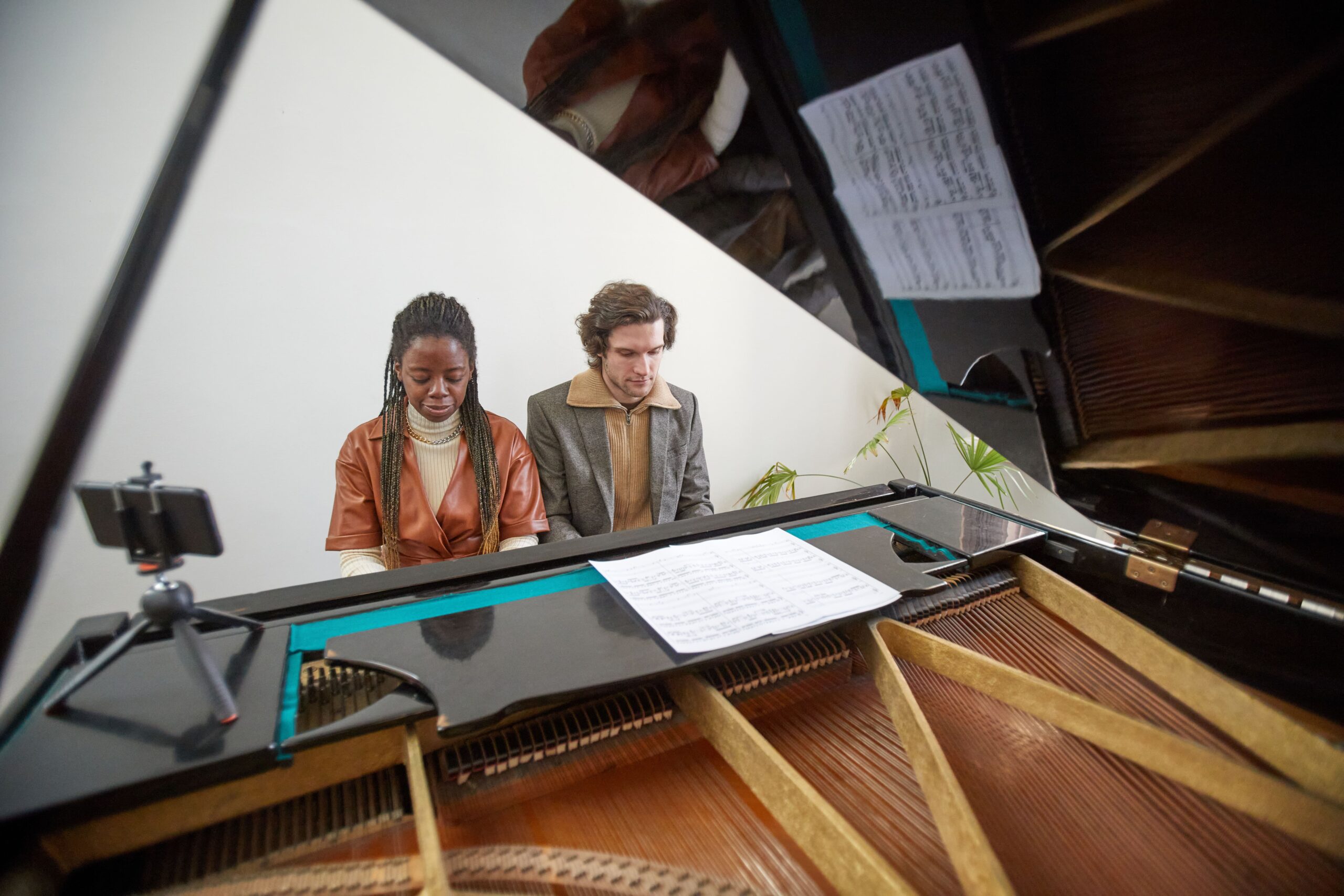The piano is not just for music; it’s a way to express feelings and feel better mentally.
Lately, people have noticed that playing the piano is good for your health. Many people have a piano at home, and it helps mix art and being mindful, giving a peaceful break from everyday worries.
Playing the piano at home can be like meditating, making you feel calm and happy.
The Therapeutic Power of Piano Playing
The therapeutic benefits of piano playing are manifold. For starters, it engages the mind and body in a harmonious task, requiring focus and coordination, which can help distract from daily worries. The act of producing music is in itself a stress reliever; it can be a form of emotional release, allowing for the expression of feelings that might be hard to articulate in words.
Furthermore, the repetitive nature of practicing scales or pieces can be a calming, meditative process, encouraging a state of flow where worries and stress fade away. Regular piano playing has also been linked to improved mental health, with studies suggesting it can enhance mood, decrease anxiety, and even sharpen cognitive abilities.
Mindful Approaches to Piano Playing
Mindfulness in piano playing involves being fully present in the moment, aware of the sound and touch of the piano, and the emotions that the music evokes. This approach turns piano practice into a meditative exercise, where the focus is on the process rather than just the outcome or the pursuit of perfection.
Mindful piano playing means listening to each note, feeling the keys under your fingers, and embracing both the dissonances and harmonies. It’s about finding joy and tranquility in every moment of playing, whether working through a challenging piece or flowing through a familiar melody. This mindful engagement with the piano can be a powerful tool for mental and emotional well-being, transforming the practice room into a space of personal reflection and peace.
Creating a Sacred Space for Musical Meditations
The concept of creating a sacred space for musical meditations revolves around designing an environment that enhances the spiritual and emotional experience of playing music. This space should be a haven where distractions are minimized, allowing for deeper concentration and immersion in the music. It can be a special corner in a room dedicated to music, adorned with items that inspire tranquility and reflection, such as soft lighting, comfortable seating, and perhaps elements of nature like plants or a water feature. The idea is to create a setting that resonates with personal tranquility, making it the perfect place to unwind and engage in musical meditations, especially for those who play piano at home.
Piano Meditation Events and Classes
Piano meditation events and classes are becoming increasingly popular as people seek ways to combine their love for music with mindfulness practices. These events often involve group sessions where participants are guided through meditative piano music, either as listeners or active participants.
Classes may center around guiding individuals in learning how to play the piano, with a specific focus on creating simple, soothing melodies that contribute to meditation or utilizing the piano as a mindfulness tool. These sessions offer a powerful communal space for relaxation, emotional release, and connection through the shared journey of mastering how to play piano.
Incorporating Technology in Musical Meditations
Technology plays a significant role in enhancing musical meditations, especially in today’s digital age. From apps that provide guided meditation soundtracks to software that allows pianists to compose and record their meditative pieces, technology opens up a myriad of possibilities. For instance, using a digital piano with headphones can allow for an immersive experience without external disturbances.
Additionally, online platforms offer virtual meditation classes and tutorials, making it easier for individuals to learn and practice piano meditation techniques from the comfort of their home. This integration of technology not only broadens access to musical meditation but also adds a layer of convenience and personalization to the practice.
Top 5 Piano Pieces for Mindfulness and Meditation
When it comes to mindfulness music pieces for piano, the focus is typically on compositions that evoke a sense of calm, tranquility, and introspection. Here are some piano pieces that are well-suited for mindfulness and relaxation:
- Erik Satie – Gymnopédies: These are serene, gentle compositions that embody simplicity and peacefulness, perfect for inducing a meditative state.
- Ludovico Einaudi – Nuvole Bianche: A contemporary piece known for its ethereal and soothing quality, ideal for relaxation and reflection.
- Claude Debussy – Clair de Lune: This piece, part of the Suite Bergamasque, is renowned for its expressive, dreamlike quality that can enhance a peaceful and contemplative mood.
- Philip Glass – Opening: A minimalist composition that uses repetitive patterns to create a hypnotic effect, facilitating deep concentration and mindfulness.
- Brian Eno – Ambient 1: Music for Airports: Though not exclusively for piano, this ambient music is designed to induce calm and is well-suited for piano adaptations.
Final thoughts
In conclusion, embracing the piano for its mindfulness and meditative qualities shows us that this instrument transcends its musical role. It becomes a powerful ally in our quest for inner peace and mental clarity. The gentle melodies and harmonious tones of the piano offer a unique pathway to relaxation and self-reflection. This approach to piano playing and listening is not just about entertainment; it’s about nurturing our minds and souls, proving that music, particularly the timeless sound of the piano, has a profound impact on our well-being and tranquility.

Say hello to Winston Papyrus, the person who writes the stories on Socialcorner.co.uk. Winston is really good at making stories that help you feel calm, especially if life feels a bit busy and confusing.
